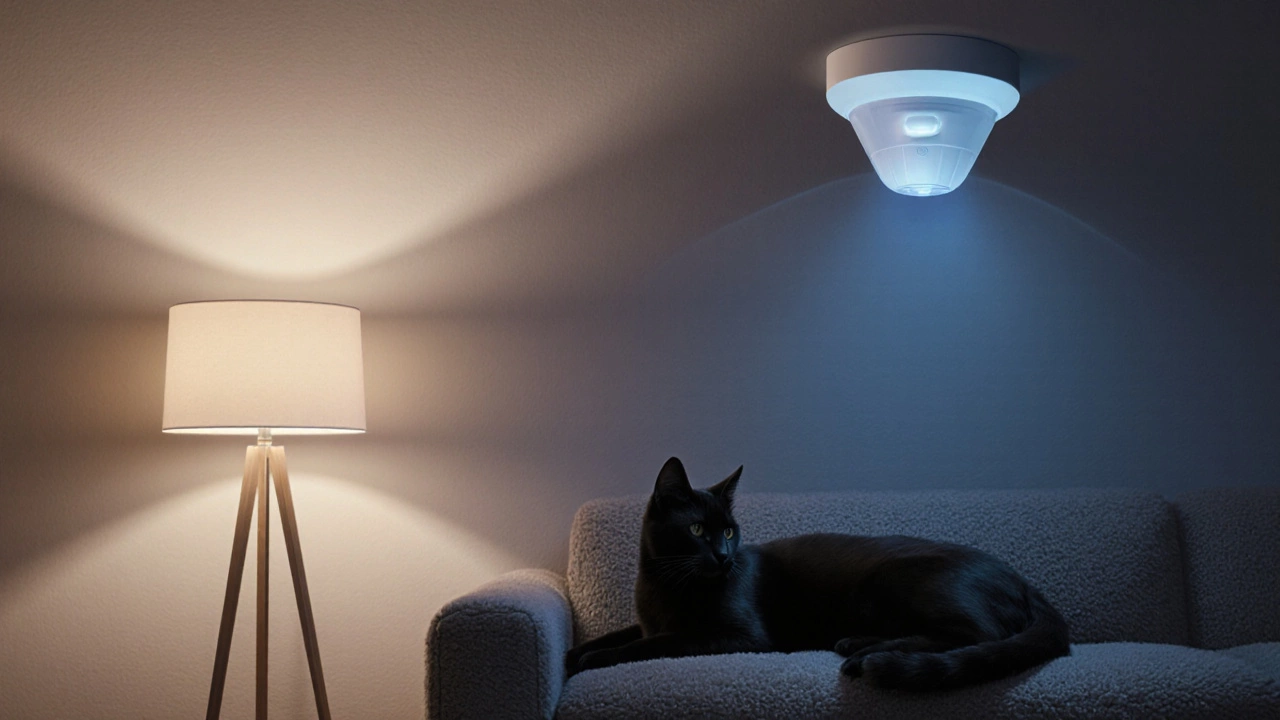When working with motion detector limitations, the constraints that affect how motion sensors detect movement in real‑world environments. Also known as motion sensor drawbacks, it covers issues like range loss, environmental interference, and false triggers. One common type is PIR sensor, a passive infrared detector that senses heat changes from bodies. Another is microwave motion detector, a device that emits radio waves and measures Doppler shifts caused by movement. Lastly, ultrasonic sensor, a sensor that uses high‑frequency sound to spot motion. Understanding each of these helps you see why limitations matter.
Motion detector limitations encompass reduced sensitivity to small or slow objects. A PIR sensor, for example, may miss a crouching intruder in a cool room because the temperature contrast is low. Microwave detectors can see through glass but often pick up motion from pets, leading to unnecessary alerts. Ultrasonic units struggle with outdoor wind noise, which skews the echo pattern and creates phantom triggers. These quirks mean you can't rely on a single technology for every scenario; combining methods often yields the best coverage.
Accurate detection requires proper sensor placement. Mount a PIR sensor too high, and the field of view narrows, missing activity at floor level. Position a microwave detector near large metal objects, and the reflections generate ghost signals that inflate the false alarm rate. Ultrasonic sensors placed in windy spots hear the breeze as movement, while indoor placement near HVAC vents can cause constant buzzing. Temperature swings, humidity, and even sunlight can alter the sensor’s baseline, so calibrating the device after installation is key.
False alarms are a major downside of poorly tuned motion detectors. A neighbor’s dog darting across the yard, a falling leaf, or a passing car can all set off a sensitive microwave unit. These nuisance alerts drain battery life, waste monitoring resources, and may lead homeowners to ignore genuine threats. To combat this, many modern systems employ dual‑tech sensors that blend PIR with microwave or ultrasonic data, filtering out spurious motion while retaining true intrusion detection.
Choosing the right sensor also depends on the property’s use case. A warehouse with high ceilings benefits from microwave coverage that penetrates further, whereas a residential home with tight hallways finds PIR sensors sufficient and less prone to pet‑triggered alarms. Outdoor perimeters often combine ultrasonic units with infrared beams to guard against both wildlife and human intruders. Matching the sensor type to the environment reduces the chance of hitting the limitations we’ve discussed.
In the collection below you’ll find deep dives into each sensor type, tips for avoiding false alarms, and practical guides on installing motion detectors for maximum reliability. Whether you’re upgrading a home alarm, outfitting a commercial site, or just curious about why your sensor sometimes misbehaves, the articles ahead break down the challenges and solutions you need to know.

Explore the key drawbacks of PIR sensors in pet‑friendly alarm systems, from temperature sensitivity to false‑alarm triggers, and learn practical tips to mitigate them.